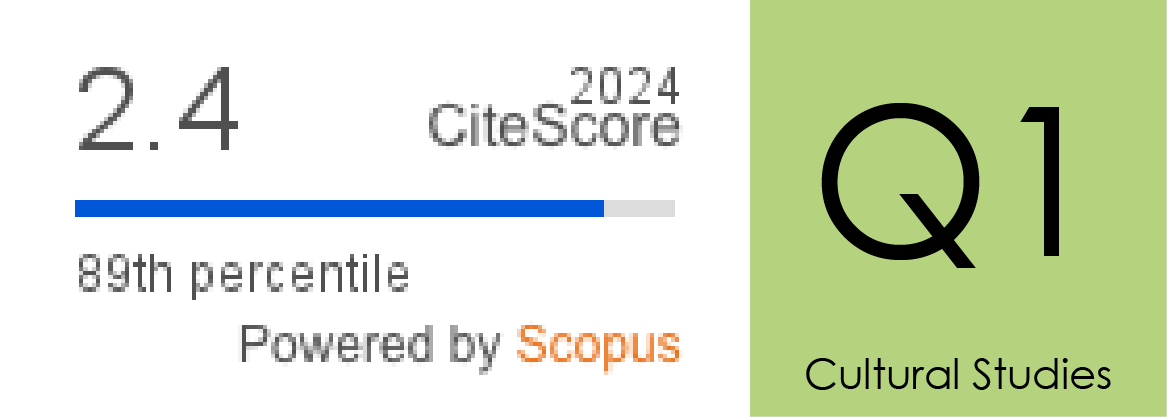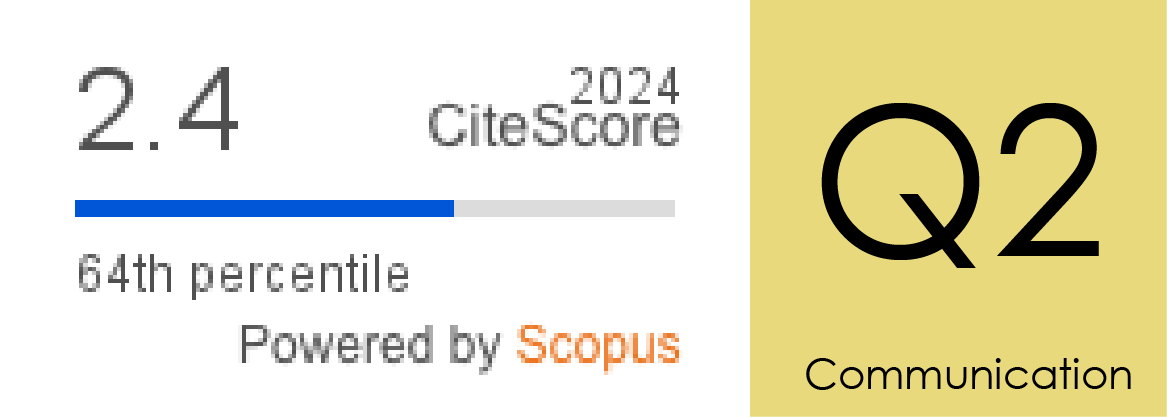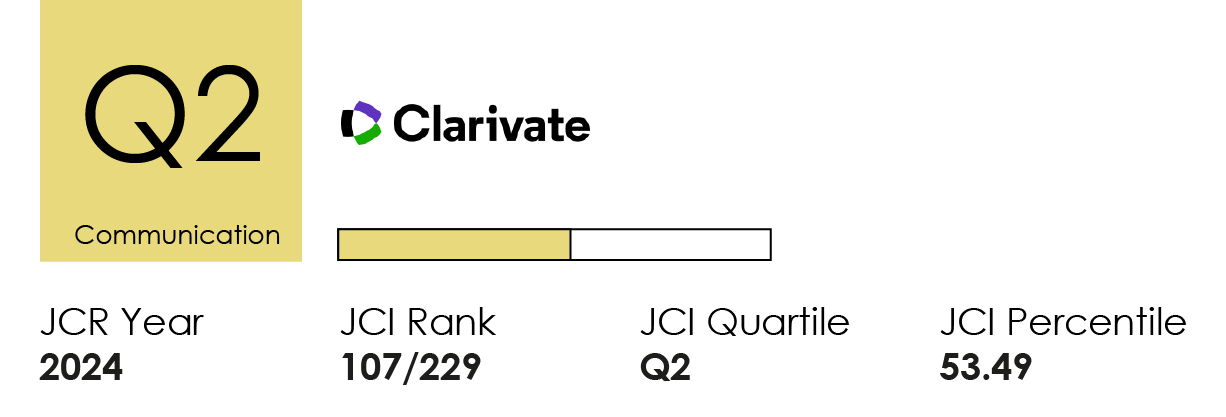El procesamiento cognitivo de la autorregulación publicitaria de los juegos de azar online en estudiantes universitarios
DOI:
https://doi.org/10.14198/MEDCOM2019.10.2.4Palabras clave:
Juegos de azar, póquer online, publicidad, autorregulación, eye tracking, neuromarketingResumen
El constante crecimiento del sector de los juegos de azar online en España ha provocado el auge de su comunicación publicitaria, presentando incumplimientos de su código de autorregulación a pesar de los riesgos que para la salud, las relaciones y el patrimonio pueden derivarse de una práctica irresponsable o compulsiva. La presente investigación analiza el procesamiento cognitivo que los jóvenes universitarios realizan sobre la publicidad en relación con el cumplimiento del código de autorregulación. Para ello, se recurre a una metodología cualitativa y cuantitativa basada en las técnicas del eye tracking, las emociones faciales y los focus groups. Los resultados ponen de manifiesto que los operadores del juego online aparecen claramente identificados y que hay una elevada interacción de los públicos con los bonos de bienvenida y la exhibición de las supuestas habilidades del jugador de éxito, una banalización del juego compulsivo, un desconocimiento de los elementos visuales de concienciación y un tratamiento sexista de la mujer que capta la atención. También existe una actitud positiva de los públicos hacia el juego presentado como forma de ocio saludable y compatible con las relaciones sociales.
Citas
APA - American Psychiatric Association (2013). Diagnostic and Statistical Manual of Mental Disorders, DSM-5 (5th ed.). Arlington, VA: American Psychiatric Association Publishing. https://doi.org/10.1176/appi.books.9780890425596
Autocontrol (2012). Código de Conducta sobre Comunicaciones Comerciales de las Actividades del Juego. Madrid: Autocontrol. Disponible en https://bit.ly/2DIOAuh
Autocontrol (2017). Código de Conducta sobre Comunicaciones Comerciales de las Actividades del Juego. Madrid: Autocontrol.
Blinde, P. (2009). Exploring the impact of gambling advertising and problem gambling. Journal of Gambling Issues, 20, 167-192. https://doi.org/10.4309/jgi.2007.20.5
Bonnaire, C. & Barrault, S. (2018). Are online poker problem gamblers sensation seekers? Psychiatry Research, 264, 310-315. https://doi.org/10.1016/j.psychres.2018.03.024
Chóliz, M. (2016). The Challenge of Online Gambling: The Effect of Legalization on the Increase in Online Gambling Addiction. Journal of Gambling Behavior, 32(2), 749-756. https://doi.org/10.1007/s10899-015-9558-6
Chóliz, M. & Lamas, J. (2017). “¡Hagan juego, menores!” Frecuencia de juego en menores de edad y su relación con indicadores de adicción al juego. Revista Española de Drogodependencias, 42(1), 34-47. Disponible en https://bit.ly/2BEtQUy
Cuesta-Cambra, U.; Niño-González, J. I. & Rodríguez-Terceño, J. (2017). The Cognitive Processing of an Educational App with EEG and «Eye Tracking». Comunicar, 25(52), 41-50. https://doi.org/10.3916/C52-2017-04
Delfabbro, P.; King, D. & Griffiths, M. D. (2014). From Adolescent to Adult Gambling: An Analysis of Longitudinal Gambling Patterns in South Australia. Journal of Gambling Studies, 30(3), 547-563. https://doi.org/10.1007/s10899-013-9384-7
Derevensky, J. L. & Gupta, R. (2007). Internet gambling amongst adolescents: A growing concern. International Journal of Mental & Health Addiction, 5(2), 93-101. https://doi.org/10.1007/s11469-007-9057-9
DGOJ (2018). Mercado del juego online en España. Informe trimestral 2018. T4. Disponible en https://bit.ly/2GjmDMw
Duchowski, A. (2013). Eye Tracking Methodology: Theory and Practice. London: Springer-Verlag.
Effertz, T.; Bischof, A.; Rumpf, H. J.; Meyer, C. & John, U. (2018). The effect of online gambling on gambling problems and resulting economic health costs in Germany. European Journal of Health Economics, 19(7), 967-978. https://doi.org/10.1007/s10198-017-0945-z
Ellis, J. D.; Lister, J. J.; Struble, C. A.; Cairncross, M.; Carr, M. M. & Ledgerwood, D. M. (2018). Client and clinician-rated characteristics of problem gamblers with and without history of gambling-related illegal behaviors. Addictive Behaviors, 84, 1-6. https://doi.org/10.1016/j.addbeh.2018.03.017
Felsher, J. R.; Derevensky, J. L. & Gupta, R. (2004). Lottery playing amongst youth: Implications for prevention and social policy. Journal of Gambling Studies, 20(2), 127-154. https://doi.org/10.1023/B:JOGS.0000022306.72513.7c
Gainsbury, S. M.; Delfabbro, P.; King, D. L. & Hing, N. (2016). An Exploratory Study of Gambling Operators' Use of Social Media and the Latent Messages Conveyed. Journal of Gambling Studies, 32(1), 125-141. https://doi.org/10.1007/s10899-015-9525-2
Gainsbury, S.; Hing, N. & Suhonen, N. (2014). Professional Help-Seeking for Gambling Problems: Awareness, Barriers and Motivators for Treatment. Journal of Gambling Studies, 30(2), 503-519. https://doi.org/10.1007/s10899-013-9373-x
Gainsbury, S. M.; Russell, A.; Hing, N.; Wood, R. & Lubman, D. I. (2014). The Prevalence and Determinants of Problem Gambling in Australia: Assessing the Impact of Interactive Gambling and New Technologies. Psychology of Addictive Behaviors, 28(3), 769-779. https://doi.org/10.1037/a0036207
Gainsbury, S. M.; Russell, A.; Wood, R.; Hing, N. & Blaszcynski, A. (2015). How risky is Internet gambling? A comparison of subgroups of Internet gamblers based on problem gambling status. New Media & Society, 17(6), 861-879. https://doi.org/10.1177/1461444813518185
Grun, L. & McKeigue, P. (2000). Prevalence of excessive gambling before and after introduction of a national lottery in the United Kingdom. Another example of the single distribution theory. Addiction, 95(6), 959-966. https://doi.org/10.1046/j.1360-0443.2000.95695912.x
Hanss, D.; Mentzoni, R. A.; Griffiths, M. D. & Pallesen, S. (2015). The Impact of Gambling Advertising: Problem Gamblers Report Stronger Impacts on Involvement, Knowledge, and Awareness Than Recreational Gamblers. Psychology of Addictive Behaviors, 29(2), 483-491. https://doi.org/10.1037/adb0000062
Hidalgo-Cerezo, A. (2018). Consumer protection and arousal to compulsive gambling linked to welcome bonuses by the online betting houses. IDP-Internet Law and Politics, 26, 59-82.
Hing, N.; Cherney, L.; Blaszczynski, A.; Gainsbury, S. M. & Lubman, D. I. (2014). Do advertising and promotions for online gambling increase gambling consumption? An exploratory study. International Gambling Studies, 14(3), 394-409. https://doi.org/10.1080/14459795.2014.903989
Hing, N.; Cherney, L.; Gainsbury, S. M.; Lubman, D. I.; Wood, R. T. & Blaszcynski, A. (2015). Maintaining and losing control during internet gambling: A qualitative study of gamblers' experiences. New Media & Society, 17(7), 1075-1095. https://doi.org/10.1177/1461444814521140
Hing, N.; Holdsworth, L.; Tiyce, M. & Breen, H. (2014). Stigma and problem gambling: current knowledge and future research directions. International Gambling Studies, 14(1), 64-81. https://doi.org/10.1080/14459795.2013.841722
Hing, N.; Lamont, M.; Vitartas, P. & Fink, E. (2015). Sports bettors' responses to sports-embedded gambling promotions: Implications for compulsive consumption. Journal of Business Research, 68(10), 2057-2066. https://doi.org/10.1016/j.jbusres.2015.03.003
Hing, N.; Russell, A.; Tolchard, B. & Nower, L. (2016). Risk Factors for Gambling Problems: An Analysis by Gender. Journal of Gambling Studies, 32(2), 511-534. https://doi.org/10.1007/s10899-015-9548-8
Jáuregui, P.; Estévez, A. & Onaindia, J. (2018). Spanish adaptation of the Gambling Motives Questionnaire (GMQ): Validation in adult pathological gamblers and relationship with anxious-depressive symptomatology and perceived stress. Addictive Behaviors, 85, 77-82. https://doi.org/10.1016/j.addbeh.2018.05.023
Lamont, M.; Hing, N. & Gainsbury, S. (2011). Gambling on sport sponsorship: A conceptual framework for research and regulatory review. Sport Management Review, 14(3), 247-257. https://doi.org/10.1016/j.smr.2011.04.004
Ley 13/2011, de 27 de mayo, de regulación del juego. BOE, 127, de 28 de mayo de 2011. Disponible en https://bit.ly/2nK5vn8
Ley 7/2010, de 31 de marzo, General de la Comunicación Audiovisual. BOE, 79, de 1 de abril de 2010. Disponible en https://bit.ly/1RnhXAd
Ley 34/1988, de 11 de noviembre, General de Publicidad. BOE, 274, de 15 de noviembre de 1988. Disponible en https://bit.ly/1GHEfr1
Li, E.; Langham, E.; Browne, M.; Rockloff, M. & Thorne, H. (2018). Gambling and Sport: Implicit Association and Explicit Intention Among Underage Youth. Journal of Gambling Studies, 34(3), 739-756. https://doi.org/10.1007/s10899-018-9756-0
López-González, H.; Estévez, A.; Jiménez-Murcia, S. & Griffiths, M. D. (2018). Alcohol Drinking and Low Nutritional Value Food Eating Behavior of Sports Bettors in Gambling Advertisements. International Journal of Mental Health and Addiction, 16(1), 81-89. https://doi.org/10.1007/s11469-017-9789-0
López-González, H. & Griffiths, M. (2018). Understanding the convergence of markets in online sports betting. International Review for the Sociology of Sport, 53(7), 807-823. https://doi.org/10.1177/1012690216680602
López-González, H.; Guerrero-Solé, F.; Estévez, A. & Griffiths, M. (2018). Betting is Loving and Bettors are Predators: A Conceptual Metaphor Approach to Online Sports Betting Advertising. Journal of Gambling Studies, 34(3), 709-726. https://doi.org/10.1007/s10899-017-9727-x
López-González, H.; Guerrero-Solé, F. & Griffiths, M. D. (2018a). A content analysis of how "normal' sports betting behaviour is represented in gambling advertising. Addiction Research & Theory, 26(3), 238-247. https://doi.org/10.1080/16066359.2017.1353082
Madan, C. R. (2010). Neuromarketing: The Next Step in Market Research? Eureka, 1(1), 34-42. https://doi.org/10.29173/eureka7786
Mañas-Viniegra, L. (2018). La autorregulación de las marcas de juegos de azar online a través de su publicidad en televisión. Methaodos. Revista de Ciencias Sociales, 6(1), 16-37. https://doi.org/10.17502/m.rcs.v6i1.210
McCormack, A.; Shorter, G. W. & Griffiths, M. D. (2014). An Empirical Study of Gender Differences in Online Gambling. Journal of Gambling Studies, 30(1), 71-88. https://doi.org/10.1007/s10899-012-9341-x
McMullan, J. L. & Kervin, M. (2012). Selling Internet Gambling: Advertising, New Media and the Content of Poker Promotion. International Journal of Mental Health and Addiction, 10(5), 622-645. https://doi.org/10.1007/s11469-011-9336-3
McMullan, J. L. & Miller, D. (2010). Advertising the "New Fun-Tier": Selling Casinos to Consumers. International Journal of Mental Health and Addiction, 8(1), 35-50. https://doi.org/10.1007/s11469-009-9201-9
Moore, T. J.; Glenmullen, J.; & Mattison, D. R. (2014). Reports of Pathological Gambling, Hypersexuality, and Compulsive Shopping Associated With Dopamine Receptor Agonist Drugs. Jama Internal Medicine, 174(12), 1930-1933. https://doi.org/10.1001/jamainternmed.2014.5262
Morvannou, A.; Dufour, M.; Brunelle, N.; Berbiche, D. & Roy, E. (2018). One-Year Prospective Study on Passion and Gambling Problems in Poker Players. Journal of Gambling Studies, 34(2), 379-391. https://doi.org/10.1007/s10899-017-9706-2
Nowak, D. E. & Aloe, A. M. (2014). The Prevalence of Pathological Gambling Among College Students: A Meta-analytic Synthesis, 2005-2013. Journal of Gambling Studies, 30(4), 819-843. https://doi.org/10.1007/s10899-013-9399-0
Nutt, D. J.; King, L. A. & Philips, L. D. (2010). Drug harms in the UK. A multicriteria decision analysis. The Lancet, 376(9752), 1558-1565. https://doi.org/10.1016/S0140-6736(10)61462-6
Ohme, R.; Reykowska, D.; Wiener, D. & Choromanska, A. (2009). Analysis of Neurophysiological Reactions to Advertising Stimuli by Means of EEG and Galvanic Skin Response Measures. Journal of Neuroscience, Psychology and Economics, 2(1), 21-31. https://doi.org/10.1037/a0015462
Real Decreto 1614/2011, de 14 de noviembre, por el que se desarrolla la Ley 13/2011, de 27 de mayo, de regulación del juego, en lo relativo a licencias, autorizaciones y registros del juego. BOE, 275, de 15 de noviembre de 2011. Disponible en https://bit.ly/2SOz0Hn
Rubio-García, L. (2018). Apuestas deportivas online: percepción adolescente y regulación publicitaria. Methaodos. Revista de Ciencias Sociales, 6(1), 139-148. https://doi.org/10.17502/m.rcs.v6i1.207
Suomi, A.; Dowling, N. A. & Jackson, A. C. (2014). Problem gambling subtypes based on psychological distress, alcohol abuse and impulsivity. Addictive Behaviors, 39(12), 1741-1745. https://doi.org/10.1016/j.addbeh.2014.07.023
Tonioni, F.; Mazza, M.; Autullo, G.; Cappelluti, R.; Catalano, V.; Marano, G. […] & Luciani, M. (2014). Is Internet addiction a psychopathological condition distinct from pathological gambling? Addictive Behaviors, 39(6), 1052-1056. https://doi.org/10.1016/j.addbeh.2014.02.016
Welte, J. W.; Barnes, G. M.; Tidwell, M. C. O.; Hoffman, J. H. & Wieczorek, W. F. (2015). Gambling and Problem Gambling in the United States: Changes Between 1999 and 2013. Journal of Gambling Studies, 31(3), 695-715. https://doi.org/10.1007/s10899-014-9471-4
Descargas
Estadísticas
Publicado
Cómo citar
Número
Sección
Licencia
Derechos de autor 2019 Ubaldo Cuesta-Cambra, Luis Mañas-Viniegra, José-Ignacio Niño-González, Luz Martínez-Martínez

Esta obra está bajo una licencia internacional Creative Commons Atribución-CompartirIgual 4.0.
Los autores y autoras que publican en esta revista están de acuerdo con los siguientes términos:
1 Derechos de autor. Los autores y autoras conservan sus derechos de autor, aunque ceden a la revista de forma no exclusiva los derechos de explotación (reproducción, distribución, comunicación pública y transformación) y garantizan a esta el derecho de primera publicación de su trabajo, el cual estará simultáneamente sujeto a la licencia indicada en punto 2. Los autores pueden establecer otros acuerdos adicionales para la distribución no exclusiva de la versión de la obra publicada en la revista, siempre que exista un reconocimiento de su publicación inicial en esta revista.
© Los autores.
2 Licencia. Los trabajos se publican en la revista sujetos a la licencia de Reconocimiento 4.0 Internacional de Creative Commons (CC BY 4.0); los términos se pueden consultar en https://creativecommons.org/licenses/by/4.0/
Esta licencia permite a terceros compartir (copiar y redistribuir el material en cualquier medio o formato) y adaptar (remezclar, transformar y crear a partir del material para cualquier finalidad, incluso comercial), siempre que se reconozca la autoría y la primera publicación en esta revista (Revista Mediterránea de Comunicación (RMC) / Mediterranean Journal of Communication (MJC), Universidad de Alicante, DOI de la obra), se proporcione un enlace a la licencia y se indique si se han realizado cambios en la obra.
3 Política de autoarchivo. Se recomienda a los autores que difundan sus trabajos a través de Internet para favorecer una circulación y difusión más rápidas y, con ello, un posible aumento en la citación y alcance entre la comunidad científica y académica, en las siguientes condiciones:
No se permite a los autores depositar en un repositorio institucional o temático, página web propia, etc., las versiones preprint (versión antes de ser evaluada) o postprint (versión evaluada y aceptada para su publicación) de sus trabajos antes de su publicación, pero sí el artículo final publicado (versión del editor).













